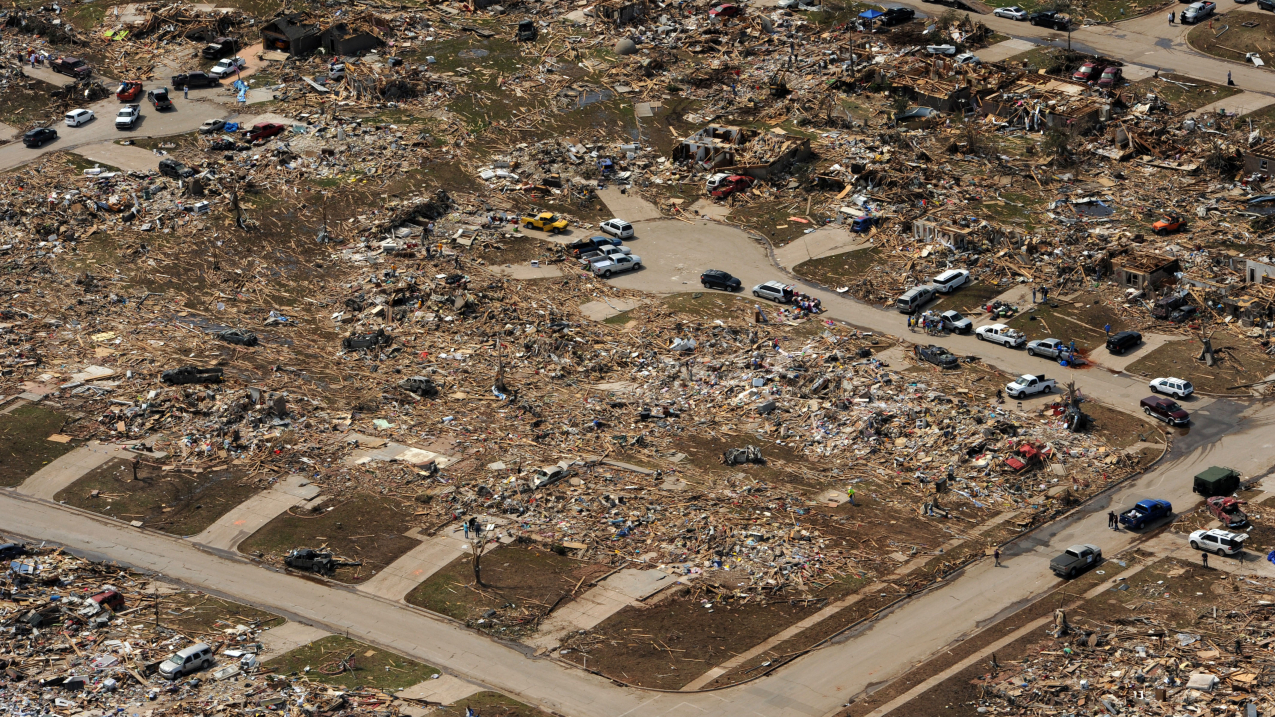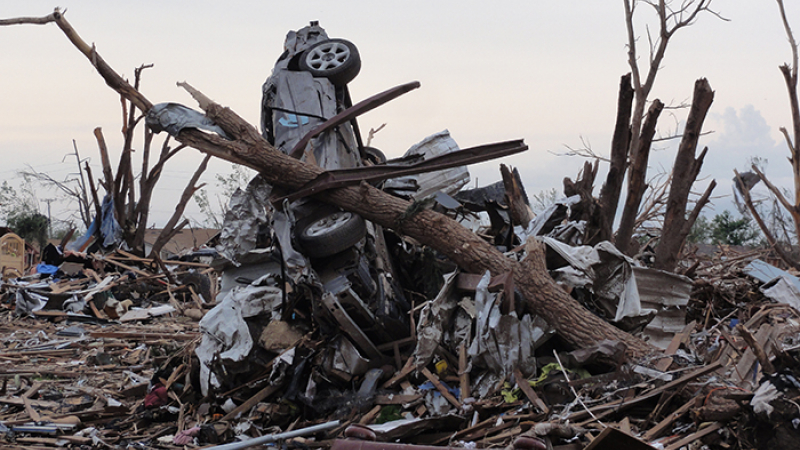Low number of tornadoes also brings fewest fatalities on record
As seasons change spring can often bring violent, deadly tornadoes to the central United States. But this year has been different, with a record-breaking lull in tornado activity and a corresponding drop in tornado deaths, according to NOAA’s Storm Prediction Center.

The last EF5 tornado in the United States struck neighborhoods like this one in Moore, Oklahoma, on May 20, 2013 (Image credit: FEMA)
During the first five months of 2018, tornadoes were responsible for three fatalities, well below the historical average of 38 deaths for that period and a record low number over the past twelve months. What’s behind this positive change?
Fewer tornadoes
One reason is simply a lack of tornadoes, particularly strong ones. NOAA’s National Weather Service has recorded a total of 431 eyewitness tornado reports as of May 31, a little over half of the average at this time of year.
37
The average number of strong (EF3 & higher) tornadoes annually in the U.S.
Of that total, only three have been rated as the more violent and deadly type, EF3, and none have been rated higher (EF4 or EF5) on the Enhanced Fujita Scale. More than 85 percent of tornado deaths occur in tornadoes rated EF3 or stronger. Incredibly the U.S. went a record 305 days, from May 17, 2017-March 18, 2018, with no EF3 or stronger tornadoes.
Why the nation has experienced so few this year is not clear, although researchers are searching for clues.
NOAA investments
Another possible explanation for the drop in tornado deaths: Better public awareness. Efforts to improve America's preparedness and response to tornadoes have ramped up significantly since the destructive and deadly 2011 tornado season.
The National Weather Service’s Weather-Ready Nation effort enlisted the help of social scientists to develop stronger warning language that is more understandable and actionable.
NOAA has invested in new satellites, upgraded radar, faster supercomputers and better models to improve forecasts and warnings. NOAA researchers are working to better understand tornadoes and improve the tools forecasters use.

It’s important to remember that tornadoes can happen any time when conditions are right. Everyone should develop a safety plan, monitor your local forecast, and heed tornado watches and warnings. Be prepared to take immediate action because mere minutes can make a difference whether you can get to safe shelter or not.
Media contact
Keli Pirtle, 405-325-6933



